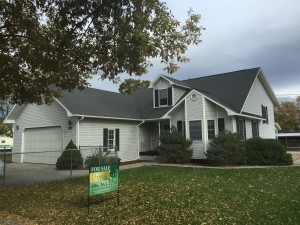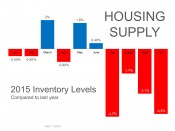
Buying and Selling You Need Someone to Walk You Through the Process!
4th & 5th Generation Montana Family!
Hello I’m Kathleen Driscoll Broker Owner of Driscoll Realty LLC in Downtown Hamilton, Mt. I have been in Real Estate and Mortgage banking for 30 plus years, I traveled as a military wife for over 20 years, which has given me a great insight into the buying and selling of homes. I'm a 4th generation Montana native, having been raised here in the Hamilton area. I served as a past Ravalli County Commissioner. I dealt with land use, Roads, Bridges, Wells, Septic’s along with Subdivision laws and requirements. Adding to my expertise.
If you want someone who can walk you through the process or buying or selling a home I have a great background & knowledge. Plus I just love people and places to explore. Let me know how I can help you feel more comfortable in finding that home or investment property you've been looking for. The process can be challenging, so let me help make easier for you.

Buying and Selling You Need Someone to Walk You Through the Process!

Written by Jaymi Naciri on Sunday, 17 January 2016
It’s not hard to daydream about shiny new countertops and fancy new appliances and one of those spa baths with a dozen sprayers and a chic soaker tub, but when it comes to home renovations, the sleek and sexy often take a back seat to the basic and boring.
“Basic maintenance, such as the roof and exterior painting, are frequently more important than an awesome kitchen,” said HGTV.
That’s the takeaway (again) from the latest Cost vs. Value Report from Remodeling Magazine, which tracks average costs and return on investment (ROI) for popular remodeling projects. The top 2016 renovation in terms of money recouped: fiberglass attic insulation, which came in at well over 100% ROI.
“For the first time, a fiberglass insulation attic upgrade was included among the list of 30 home renovation projects evaluated and proved to add the greatest value to the home at 117% of the cost of the project, according to Hanley Wood, publisher of Remodeling Magazine,” said KCEN TV.
Sound like a snoozer? Only if saving money – and energy – puts you to sleep.
“This is great news for homeowners, who know that insulation improves the comfort and energy efficiency of their home, but may not know that it adds value as well,” said Curt Rich, President and CEO of the North American Insulation Manufacturers Association on KCEN. They estimated that this project would cost “an average of $1,268 nationwide. Real estate pros, meanwhile, estimated the project would increase a home’s retail value by an average of $1,482. That’s a $116.90 return for every $100 invested.”
Key Trends in the 2016 Cost vs. Value Report
Manufactured stone veneer was new to the project list last year and came in at No. 2. It finished in the same position on the 2016 report, with an ROI of 92.9%. Next were:
Midscale garage door replacement (91.5% ROI)
Steel entry door replacement (91.1% ROI and falling from last year’s top spot)
Upscale garage door replacement (90.1% ROI)
Notice what they have in common? These four projects are all exterior, which highlights the importance of curb appeal. In fact, “12 of the 15 highest-scoring projects” in this year’s report were for “work done on the exterior of the home.”
Reflection of the Real Estate Market
Remodeling projects follow the logic of the real estate market overall. Remodeling notes that, “Gains in the new-home market are helping lift the value of remodeling projects even as costs rise.” With more money and equity can come more complex undertakings, so some “bigger and more expensive projects” also saw gains this year,” they said.
A minor kitchen remodel that costs $20,122 comes in at 83.1% ROI, up from 79.3% last year. A family room addition at a cost, on average, of $86,615 will bring a return of 67.9%, up from last year’s return of 64.1%.
But, overall, returns on these more expensive and more extensive projects were limited. By and large, upscale projects are still not providing the kind of return that would compel many homeowners to renovate if they have their eye solely on the bottom line. Among the five projects with the worst returns were:
Midrange bathroom addition (56.2% ROI)
Upscale bathroom addition (56.7% ROI)
Upscale master suite (57.2% ROI)
Upscale bathroom remodel (57.5% ROI)
Not surprisingly, the projects that are easier to accomplish and make the lowest impact on a bank balance continue to dominate the list. “As a general rule, the simpler and lower-cost the project, the bigger its cost-value ratio. Four of the five projects that cost less than $5,000 for a pro to do were ranked in the top five for cost recouped, and the remaining one was the cheapest project in the $5,000-to-$25,000 price range,” they said.
“No project costing more than $25,000 ranked better than 15th. This is in part because the simpler projects tend to require less time and skill by a professional remodeler. It stands to reason that it’s far easier to replace a steel entry door than it is to design, source, and build a two-story addition.”
Written by Stewart Wolpin on Thursday, 14 January 2016
When the app revolution began, the smartphone suddenly started to assume the functions of what used to be separate gadgets – cameras, GPS devices, MP3 players, eBooks, handheld games, remote controls and much more.
In the same way, the smart LED lightbulb is beginning to do things other than just light up. Plenty examples of smart LED lightbulbs illuminated the show floor at the Consumer Electronics Show (CES) in Las Vegas last week.
Talk to Your Lamp
Perhaps the most aggressive smart LED bulb integrator continues to be Sengled. This company is already selling Sengled Pulse Solo, an LED bulb-plus-Bluetooth speaker, Boost, the LED bulb-plus-Wi-Fi-repeater, and most recently, the Sengled Snap, an indoor-outdoor light with an integrated 1080p Wi-Fi camera.
At CES, Sengled presented two new LED bulb-plus products: the Voice and Flex.
The Flex is a Wi-Fi speaker bulb. Like the previous Pulse Solo speaker bulb, the Flex includes dual JBL speakers and, thanks to its Wi-Fi connections, will let you tap into Internet radio stations as well as your own music collections and playlists.
Aptly named, the Voice is actually the first truly “smart” bulb, because it can obey voice commands to turn on or off, and, like Apple’s Siri or Amazon’s Echo, it can answer questions. Inside the Voice are twin microphones and JBL speakers that allow it to control not only itself, but other smart home products as well. It can also play streaming music.
Voice’s microphones can also hear potentially hazardous sounds such as barking dogs, breaking glass or crying babies. Depending on how you program Voice through its app, the bulb can transmit appropriate text alerts to your smartphone, plus signal other Voice bulbs you may have throughout your home to collectively flash or sound a siren.
Unfortunately, Sengled couldn’t say when this potentially revolutionary bulb will go on sale other than sometime this year.
Look Ma, No Wires
Other companies also presented innovations that take LED bulbs to a whole new level.
Instead of reacting to commands, Stack Lighting’s bulbs react to someone just walking into a room. Sensors built into the Stack Classic, available later this year, detect motion and occupancy and turn on or off appropriately. All of these features are customizable in its corresponding app.
Because using Bluetooth for music streaming has limited range and can degrade the sound, MIPOW introduced its two newest Wi-Fi-powered PLAYBULB bulbs at CES, and one is so smart it doesn’t even need to be screwed into a socket. The Sphere is a 6-inch-wide frosted globe that can be lit up in one of 16.7 million colors – just tap it to change colors or choose a hue from its PLAYBULB X app for either iOS or Android. Inside Sphere’s water-resistant exterior is an eight-hour rechargeable battery, which means you can place it almost anywhere. That also makes it really handy if your traditionally powered lights go out.
Natural Light
One thing LED lights do really well is change colors, from basic incandescent warm to fluorescent cold color temperatures. Taking advantage of this capability, a Russian outfit called SVET has developed a smart LED bulb that knows what time of day it is, and reacts accordingly to mimic the sunlight. For instance, SVET’s illumination will automatically soften as dusk draws near, emulating the sunset and promoting relaxation. In the morning, it gently becomes brighter and colder to emulate dawn and the morning light.
About the Author
Stewart Wolpin is a freelance journalist and longtime CES veteran. Stewart writes about consumer technology foreBay, where you can find all the latest electronic gadgets for your home.



Written by Jaymi Naciri on Wednesday, 06 January 2016 12:18 pm
You found what you think is the right house. The bank approved you. The lender secured your loan with just five percent down. You’ve got your closing costs together and you’ve lined up your movers. But are you really making the right move?
Turns out, a simple personality test might help you figure it out.
A study titled “Real Estate and Personality” from the Journal of Behavioral and Experimental Economics shined a light on the relationship between personality and buyer decisions, suggesting “that a person’s personality traits are predictive of his or her real estate decisions” said Lakeside Real Estate Group. “Researchers gave more than 1,100 respondents a personality-assessment test, asking them to rate themselves on several personality traits.”
Those traits are based on the Five Factor Model (FFM), “a widely examined theory of five broad dimensions used by some psychologists to describe the human personality and psyche,” said Wikipedia. “The five factors have been defined as openness to experience, conscientiousness, extraversion, agreeableness, and neuroticism.”
Employers and universities use the FFM to screen applicants, and now it’s being used for a new purpose.
Are you a saver or a spender? Do you have a tendency to buy more than you can afford or do you always live comfortably within your means? Does the idea of an adjustable rate loan give you anxiety? Being able to assess your personality can help determine how you behave as a homeowner—or if you even become one.
About the study
Among the 1,110 questions in the study, participants were asked to rate themselves on personality traits related to the FFM, including: “openness (e.g. artistic and imaginative); conscientiousness (efficient and organized); extroversion (sociable and energetic); agreeableness (forgiving and undemanding); and neuroticism (tense and moody),” said Lakeside.
The next step was learning more about their real estate preferences—mortgage offerings, whether they preferred to buy or rent, and investment strategies—controlled by factors including age, gender, income, and education.
“The results showed ‘a very solid correlation’ between personality and real estate choices, co-author Danny Ben-Shahar, a professor at Tel Aviv University, told The Wall Street Journal,” said the National Association of Realtors®. “High scorers of neuroticism, for example, showed a preference for home ownership over renting and tend to opt for mortgages with lower loan-to-value ratio — likely because neurotic people tend to be more averse to risk, Ben-Shahar says. Meanwhile, respondents who scored high on agreeableness or extroversion, as well as conscientiousness, showed a preference for investing in real estate over stocks. Researchers speculate that conscientious people are more willing to postpone gratification and likely to make a less-risky investment while also diversifying their portfolio.”
Other results showed that “efficient, organized, thorough, diligent and detail oriented” people were well matched with fixed-rate mortgages.